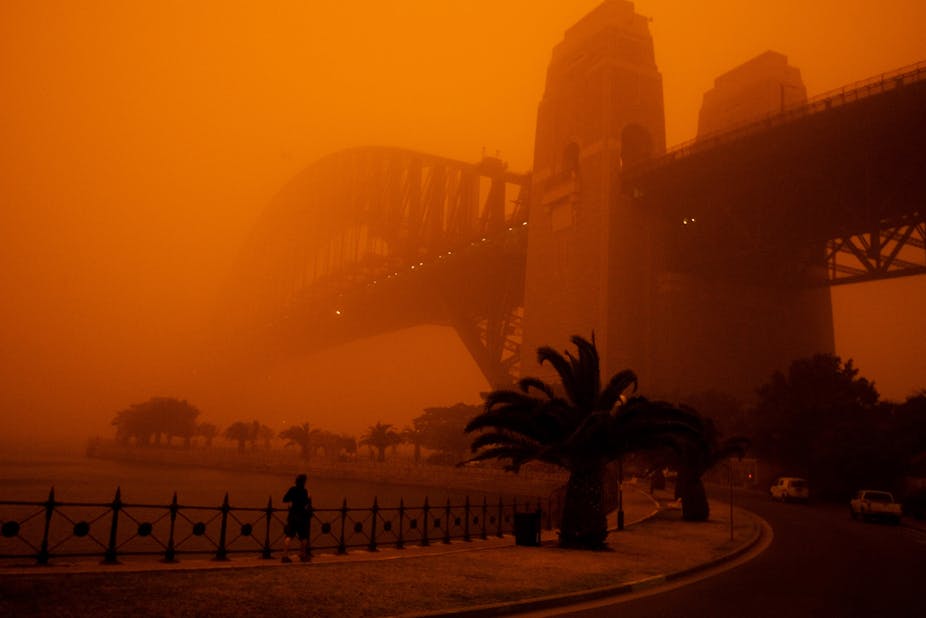Australians, human and animal, have a good history of adapting to change. But how best to deal with a changing climate is emerging as a significant and often contentious policy challenge. It’s hard to think about what we’re prepared to give up, but we need to start planning now.
We’re used to adapting
Australia has a highly variable climate due to its location between the Indian, Pacific and Southern oceans. Historically, our natural ecosystems and species have evolved to adapt to this variability.
Humans also learnt to adapt. Aboriginal communities developed patterns of movement in response to the availability of food and other resources at different times of the year and under different weather patterns.
Farmers and land managers have learnt through experience to deal, not always successfully, with changing rainfall and temperature and the impact of extreme events. Research has supported new crop and pasture varieties and different management systems to cope with this variability.
What is the best way to prepare for extreme conditions?
Adaptation is, in essence, about making good decisions for the future; now those decisions must take climate change into account.
It’s not easy: we have to recognise and understand potential future climate impacts, plan and manage for their consequences, while also considering the broader social, economic or other environmental changes that may affect us.
For example, how do we cope with the anticipated increase in population in Victoria? It will cause additional stresses, and some sections of society will feel more vulnerable.
In a policy sense, adaptation differs from mitigation - reducing our emissions - because climate change effects and our response will vary across countries, regions and local areas. Mitigation requires a common global goal.
Adaptation policies and practices need to be specific to local communities, infrastructure or industries. What is suitable adaptation for Cairns won’t necessarily apply in Castlemaine or Casterton.
Policy makers will also need to consider the relative degree of investment in “hard” and “soft” options.
“Hard” engineering options include higher sea walls or levee banks, bigger drains, or changes to buildings or transport infrastructure to cope with higher heat loads or more extreme rain.
“Softer” socially-oriented options encourage us to adopt different behaviours through planning, education, regulation or financial incentives.
If we plan, we can benefit from change
Some impacts of climate change could be positive. For example, with the recent drying trend in Victoria it is now possible to grow higher value crops in some regions than was possible under past climates. Some native species or ecosystems may benefit from future climate change.
However, we have to anticipate, plan and invest if we’re to benefit from any changes. And many of the worst potential consequences of climate change may be beyond the coping capacity of our human or natural systems.
We used to ask what impact climate change would have, and look at how vulnerable different industries and communities would be. Now we’re asking, what do we need to know in order to adapt, and how do we know if action is successful?
We need tools that will help us better understand vulnerability, improve decision-making under uncertainty, help us evaluate different adaptation strategies, and decide where to allocate investment.
Whose responsibility is this?
Much of the policy discussion now is about who takes responsibility for the risks of a changing climate. Is it state, local or Australian government (as we are seeing played out with the debate about who pays for the impacts of recent floods and cyclones). Should the private sector and individuals look out for themselves?
Whilst complex, adaptation can be seen as inherently a social learning process. It requires an understanding of sense of place, a capacity for individuals and society to identify change and what it means for them. Ultimately, we need to agree on common goals to best cope with, or benefit from, the challenges that a future climate will bring.
This requires meaningful conversations within the community about what we value and what we might be prepared to lose. We need to talk about how to overcome barriers to understanding, planning for and managing the impacts of climate change.
Successful adaptation isn’t just about building stronger bridges. It is about communities. Successful adaptation will require strategic thinking, resourcefulness, creativity, collaboration and effective communication.

